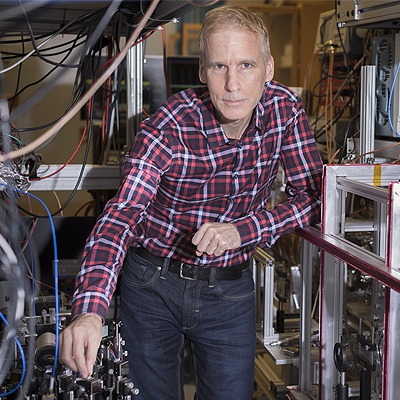
The reason why there is a lot of matter in the Universe, such as electrons and protons, but no anti-matter (anti-electrons and antiprotons) is a riddle many scientists worldwide are still trying to solve. York University Distinguished Research Professor Eric Hessels of the Faculty of Science recently received two grants of $900,000 each over three years from the Alfred P. Sloan Foundation and the Gordon and Betty Moore Foundation to begin a program that he hopes will help bring clarity.
He will work with the EDM3 (pronounced EDM cubed) collaboration at York on the project, titled “EDMcubed: an electron Electric Dipole Measurement using Molecules in a Matrix,” to measure the electric dipole moment of the electron.
“This is one of the great unsolved mysteries of physics, since the laws of physics, as we understand them today, would not allow for any significant imbalance between matter and antimatter,” said Hessels. “As a result, the laws of physics need to be modified. Modifications that solve the matter-antimatter mystery also predict that the electron will have an electric dipole moment.”
The electron is expected to have a non-zero electric dipole moment – a very slight a non-spherical charge distribution. However, the mechanism that causes this dipole is unknown.
“The EDM3 collaboration has devised a clever way to measure the electron electric dipole moment that involves embedding a large number of polar molecules into solid cryogenic argon,” says Hessels, who also received about $800,000 total from the Natural Sciences and Engineering Research Council of Canada and the Templeton Foundation last year.
Precise electron electric dipole moment measurements will guide extensions to the Standard Model, while the EDM3 method has the potential to reduce the electron electric dipole moment uncertainty by up to five orders of magnitude.
The EDM3 method uses a large sample of polar molecules embedded within a rare-gas matrix. As the molecules are stationary in the matrix, it allows for long measurement times. This could allow the researchers to reach statistical sensitivities that are many orders of magnitude beyond the current electron electric dipole moment limit.
It could also help answer the question – what happened to all the anti-matter after the Universe was formed.
